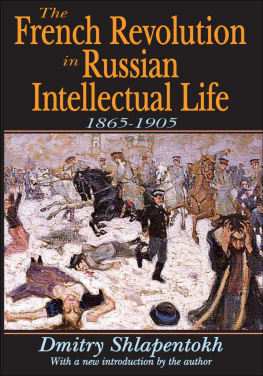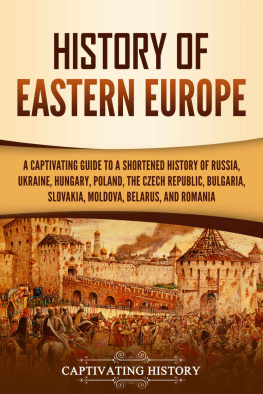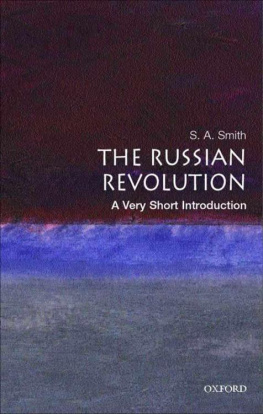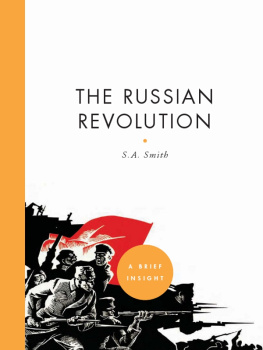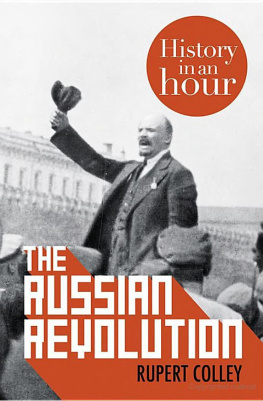
The Rise and Fall of Russias Far Eastern Republic, 19051922
The Russian Far East was a remarkably fluid region in the period leading up to, during, and after the Russian Revolution. The different contenders in play in the region, imagining and working toward alternative futures, comprised different national groups, including Russians, Buryat-Mongols, Koreans, and Ukrainians; different imperialist projects, including Japanese and American attempts to integrate the region into their political and economic spheres of influence as well as the legacies of Russian expansionism and Bolshevik efforts to export the revolution to Mongolia, Korea, China, and Japan; and various local regionalists, who aimed for independence or strong regional autonomy for distinct Siberian and Far Eastern communities and whose efforts culminated in the short-lived Far Eastern Republic of 19201922. The Rise and Fall of Russias Far Eastern Republic, 19051922 charts developments in the region, examines the interplay of the various forces, and explains how a Bolshevik version of state-centered nationalism prevailed.
Ivan Sablin is a Research Group Leader in the Department of History, University of Heidelberg, Germany.
Imperial Transformations Russian, Soviet and Post-Soviet History
Series editors:
Alexander Semyonov, Professor of History, National Research University Higher School of Economics, Saint Petersburg
Ronald Grigor Suny, William H. Sewell, Jr. Distinguished University Professor of History, University of Michigan; Emeritus Professor of Political Science and History, University of Chicago
The Rise and Fall of Russias Far Eastern Republic, 19051922
Nationalisms, Imperialisms, and Regionalisms in and after the Russian Empire
Ivan Sablin
The Rise and Fall of Russias Far Eastern Republic, 19051922
Nationalisms, Imperialisms, and Regionalisms in and after the Russian Empire
Ivan Sablin
First published 2019
by Routledge
2 Park Square, Milton Park, Abingdon, Oxon OX14 4RN
and by Routledge
711 Third Avenue, New York, NY 10017
Routledge is an imprint of the Taylor & Francis Group, an informa business
2019 Ivan Sablin
The right of Ivan Sablin to be identified as author of this work has been asserted by him in accordance with sections 77 and 78 of the Copyright, Designs and Patents Act 1988.
All rights reserved. No part of this book may be reprinted or reproduced or utilised in any form or by any electronic, mechanical, or other means, now known or hereafter invented, including photocopying and recording, or in any information storage or retrieval system, without permission in writing from the publishers.
Trademark notice: Product or corporate names may be trademarks or registered trademarks, and are used only for identification and explanation without intent to infringe.
British Library Cataloguing-in-Publication Data
A catalogue record for this book is available from the British Library
Library of Congress Cataloging-in-Publication Data
A catalog record has been requested for this book
ISBN: 978-1-138-31730-7 (hbk)
ISBN: 978-0-429-45527-8 (ebk)
Typeset in Times New Roman
by Wearset Ltd, Boldon, Tyne and Wear
Contents
Figures
Introduction to the series
Imperial Transformations Russian, Soviet and Post-Soviet History
The history of empires as a form of great power politics and politics of diversity has recently been expanded to include non-European experiences with empire formation, transformation, and post-imperial trajectories. The field of Russian-Soviet history may be said to be the most ignored in the historiography of empire and colonialism, which has focused primarily on western European overseas empires. The research on the history of the Russian Empire and the Soviet Union has grown dramatically in the past two decades and suggests new perspectives on global histories of empire, colonialism, and nationalism. This imperial experience of the Russian Empire and the Soviet Union was situated both in Europe and Asia in historical geographic terms and combined European and extra-European historical features in politics and ideologies of empire. Yet it has often been treated in isolation, without sufficiently considering comparisons with other empires or episodes of entanglement between different imperial formations.
The series reflects the current and continuously expanding research on the history of the Russian Empire and the Soviet Union as imperial formations and instruments of governing diversity on the Eurasian continent. It prioritizes the work of scholars who explore the history of the Russian Empire and the Soviet Union from a comparative and entangled history perspective and with the help of methodologies of global and transnational histories. By extending the focus from Russia and the USSR to the broader European, Asian, even global context, the historical experience of Russia and the Soviet Union can be seen to reflect the global trends in the history of imperial regimes and ideologies. At some moments, when threatened with crisis and collapse, Russia borrowed imperial practices and blueprints from other empires; at other times, Russia and the USSR pioneered new approaches to the problem of diversity, for example, the Leninist program of national self-determination and the formation of a federal union of national republics, which directly or indirectly influenced politics in other regions. The series provides a venue for much-needed scholarly publications addressing questions of comparison and connections between Russia and the USSR and other empires.
The title of the series stresses both empire and the dynamism in the history of empires. Unlike nation, until recently, historians have viewed empire as given rather than constructed. The often-repeated statement on the longevity of empires in history (counting millennia and centuries) conjures up the sense of a point of departure and a bedrock structure. The antiquity and persistence of empire make it more real in historical thinking than a denaturalized, imagined, and constructed nation. The series suggests critically revisiting the teleology of modern historical transition from empire to nation and focusing on ruptures, crises, reforms, and revolutions that have marked the modern history of empires. Multiple imperial transformations were an intrinsic part of Russian and Soviet history. Russias empires counted Byzantium and the Chingizid rule, Muscovy, and Peter the Greats empire, Catherine the Greats confessional state and the nationalizing empire of the last Romanovs, and, finally, the Bolsheviks World Revolution and Soviet empire. Acknowledging ruptures and crises in the history of the empire and putting them at the center of thinking about empire allow the question about persistence of imperial sovereignty and diversity to be posed in a new light.
The series encompasses different streams of current historical research and welcomes authors who employ different methodologies (social, cultural, and political history) to understand the imperial past within the broad framework of new imperial history. This framework departs from earlier structuralist understandings of empire in Russian history and expands the history of the Russian Empire and the Soviet Union to include the multiplicity of voices beyond the political center, including the non-Russian national movements, regionalist political forces, non-Orthodox and non-Christian confessions, non-elite subaltern social groups of imperial society; the complex character of religious, ethnic, and cultural diversity in Russia and the USSR, including the lived experience of diversity and of crossing boundaries in imperial society; imperial visions and ideologies of imperial politics; the production of knowledge about imperial space and diversity; the multifaceted nature of transition from empire to post-imperial order and nation-state, including the inheritance of institutional and legal frameworks from the imperial past and historical memory about empire.


